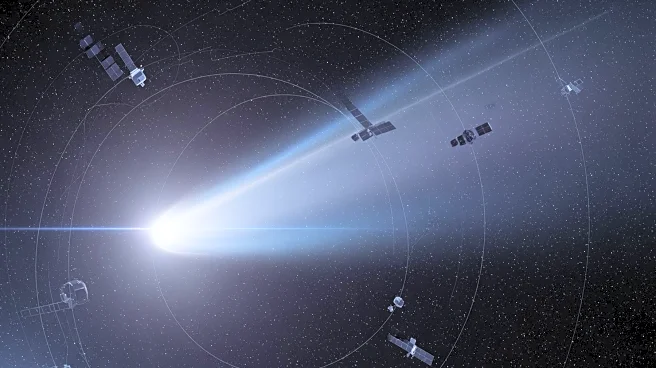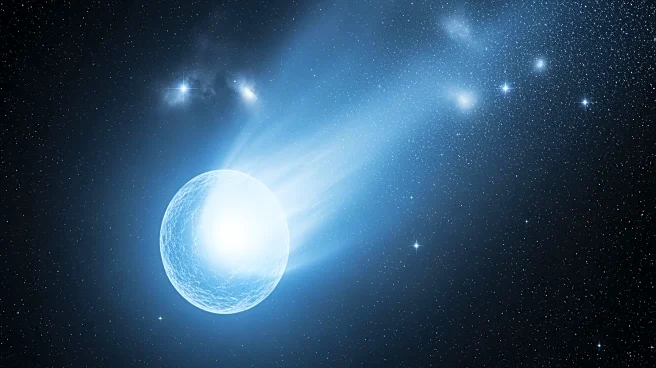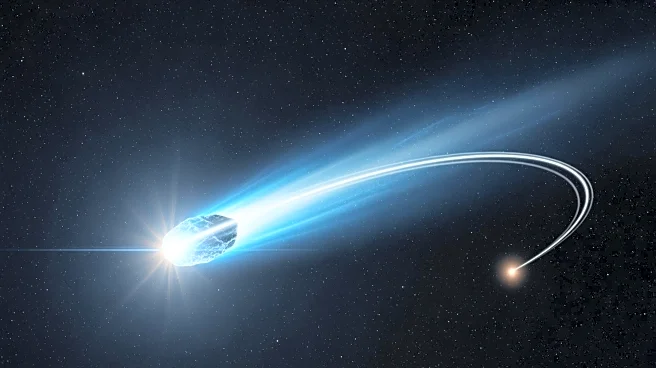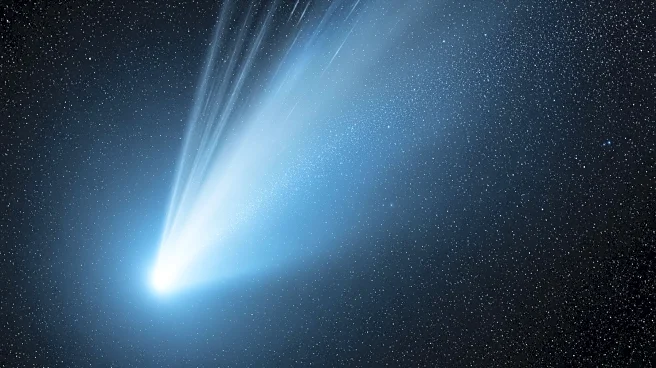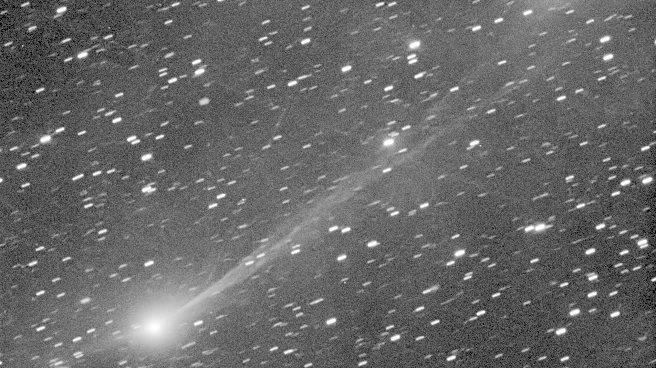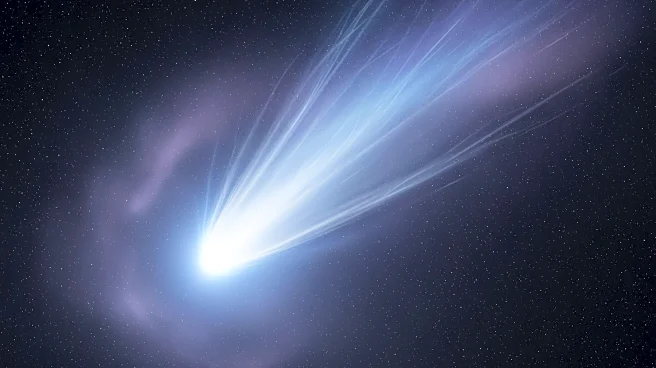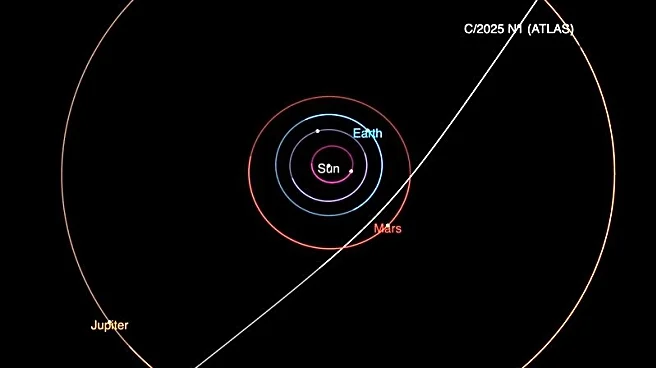What's Happening?
NASA has launched a comprehensive observation campaign involving multiple spacecraft to study the interstellar comet 3I/ATLAS. Since its discovery on July 1, the comet has been observed by twelve NASA assets, providing a wealth of data on its composition
and trajectory. The campaign includes observations from Mars, where NASA's spacecraft captured close-up images, and from heliophysics missions that tracked the comet as it passed near the Sun. This marks the first time NASA's missions have intentionally observed an object from another solar system, offering new insights into the differences between interstellar and solar system comets.
Why It's Important?
The multi-mission observation of comet 3I/ATLAS is significant for its potential to expand our understanding of interstellar objects. By studying the comet from various vantage points, NASA can gather detailed information about its physical and chemical properties, which may differ from those of comets native to our solar system. This research contributes to the field of planetary science and enhances our knowledge of the universe's diversity. The data collected can inform future missions and improve models of comet behavior, aiding in the prediction and tracking of interstellar visitors.
What's Next?
NASA will continue to observe comet 3I/ATLAS as it approaches Earth, with its closest pass expected in December. The ongoing campaign will provide additional data that can be used to refine models and improve our understanding of interstellar comets. As the comet travels through the solar system, NASA's spacecraft will continue to capture images and analyze its properties, contributing to the broader field of astrophysics and planetary science.
Beyond the Headlines
The observation of interstellar comet 3I/ATLAS offers a unique opportunity to explore the diversity of celestial bodies in the universe. By comparing these objects to those within our solar system, scientists can gain insights into the formation and evolution of different planetary systems. This research may also have implications for understanding the potential for life beyond Earth, as it sheds light on the chemical compositions and environmental conditions of distant solar systems.
